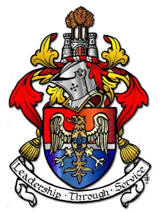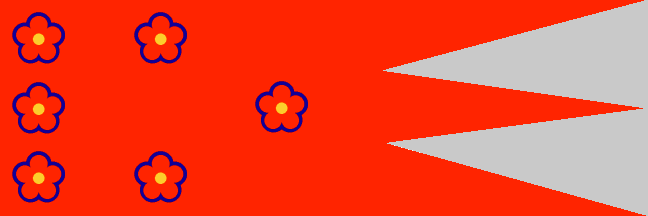| Royal
Ancestors from the
Holy Roman Empire |
|
|
Royal Ancestors from the Holy Roman Empire INTRODUCTION The Holy Roman Empire in general usage applied to an amorphous political entity of western Europe, originated by Pope Leo III in 800 AD, and in nominal existence more or less continuously until 1806. For purposes of historical accuracy, it should be noted that, in its initial stages, the organization was styled “Empire of the West” and “Roman Empire”; and that the epithet “Holy” did not appear in the official title until 1155. The establishment of the Holy Roman Empire represented, as the original styling implies, an attempt to resuscitate the Western Roman Empire, which had collapsed in 476. Throughout the turbulent period, known in history as the Dark Ages, that followed the removal of Romulus Augustulus from the Western throne by Odoacer, the traditional concept of a temporal realm coextensive with the spiritual dominions of the Church had not been kept alive by the bishops of Rome, later referred to as the popes. The Byzantine Empire, the eastern division of Imperial Rome, retained during part of the period, nominal sovereignty over the territories formerly under control of the Western Empire, and many of the Germanic tribes that had seized these territories gave formal recognition to the overlordship of the Byzantine rulers. partly because of this circumstance and for other reasons, including dependence on Byzantine protection against the Lombards, the bishops of Rome also recognized the sovereignty of the Eastern Empire for an extended period after the enforced abdication of Romulus Augustulus. With the coalescence of groupings of the Germanic tribes into independent Christian kingdoms during the 6th and 7th centuries, the political authority of the Byzantine emperors became practically nonexistent in the west. The spiritual influence of the western division of the Church expanded simultaneously, in particular during the pontificate of Gregory I. As the political prestige of the Byzantine Empire declined, the papacy grew increasingly resentful of interference by secular and ecclesiastical authorities at Constantinople in the affairs and practices of the western Church. The consequent feud between the two divisions of the Church attained critical proportions during the reign of Emperor Leo III, who sought to abolish the use of images in Christian ceremonies. Roman resistance to Leo’s decrees culminated in a complete rupture with Constantinople. After severance of its ties with the Byzantine Empire, the papacy nourished dreams of a revivified Western Empire. Evidence exists, indeed, that certain of the popes weighed the possibility of launching such an enterprise and assuming the leadership of the projected state. In absence of the prerequisite organizational apparatus and confronted with a hostile Lombardy, the Church hierarchy, abandoning the idea of a joint spiritual and temporal realm, finally decided to confer imperial status on the then dominant western European power, the kingdom of the Franks. Several of the Frankish rulers had already, in various ways, demonstrated their fidelity to the Church, and Charlemagne, who ascended the Frankish throne in 768, had displayed ample qualifications for the exalted office, notably by the conquest in 772 of Lombardy and by the expansion of his dominions to imperial proportions. On December 25, 800 Pope Leo III crowned Charlemagne Emperor of the West, establishing both a precedent and a political structure that were destined to figure de3cisively in the affairs of central Europe. The precedent, inauguration of the papal prerogative in the selection and coronation of the emperors of the West, endured for nearly 700 years. In its primary stage, the resurrected Western empire endured, as an effective political entity, less than 25 years after the death in 814 of Charlemagne. The reign of his son and successor Louis I was marked by intensive feudal and fracticidal strife, climaxed in 843, by the partition of the Empire. Despite the dissension within the newly created Western Empire, the popes maintained the Imperial organization, except for an interlude extending from 877 to 881, for more than a century after the death of Louis I, conferring the title mainly on rulers of the Carolingian dynasty. The emperors exercised little authority beyond the confines of their personal dominions, however. After the reign of the Lombard Berengar I, who was crowned emperor by pope John X, the Imperial throne remained vacant for nearly four decades. The East Frankish Kingdom, or Germany, capably led by Henry I and Otto I, emerged as the strongest power in Europe during this period. Besides being a capable and ambitious sovereign, Otto I was an ardent friend of the Church, as revealed by his missionary activities east of the Elbe River, and, finally, by his military campaigns, at the behest of Pope John XII, against, Berengar II of Lombardy. In 962, in recognition of Otto’s service, John XI awarded him the Imperial crown and title. Thus resurrected, the Empire of the West at first an unstable political union of Germany and Italy and later a loose union of Germanic states, remained in almost continuous existence for more than 800 years. During the Italo-German phase, the Empire played a significant role in central European politics and ecclesiastical affairs. A central feature of the history of this period was the mortal struggle between the popes and the emperors for control of the Church. All of the emperors were German kings, and because Imperial duties and ambitions inevitably required their full attention, national interests were neglected. As one result, Germany, which might have been transformed into a strong centralized state, degenerated into a multiplicity of minor states. In 1155 Frederick Barbarosa, one of the greatest emperors, added “Holy” to the Imperial designation, ostensibly to increase the sanctity of the crown. The Holy Roman Empire had little real importance in European political and religious developments after the Great Interregnum, the event that signaled papal victory in the protracted struggle with the Empire. Beginning in 1273 with Rudolph I, the first of the Hapsburg dynasty, various German kings laid claim to the Imperial title and, in several instances, these claims were recognized by the popes. The office was little more than honorary, however, and inasmuch as the Empire comprised a loose confederation of sovereign states and principalities, Imperial authority was strictly nominal. Louis IV who assumed the title in 1314, successfully challenged the power of the papacy and, for a brief period, restored the prestige of the Empire. During the reign of Charles V, the Empire encompassed territories as extensive as those of Charlemagne. But dynastic rather than ecclesiastical principles composed the chief cohesive elements in the Imperial structure of Charles V. The medieval concept of a temporal state coextensive and in harmony with the spiritual dominions of the Church survived solely as a theory. As the Protestant Reformation gained headway, even the theory lost practical meaning. In its final phase, the Holy Roman Empire performed certain useful purposes, including the maintenance of a measure of unity amount the component states. The later emperors, all rulers of Austria and concerned mainly with aggrandizement of their personal dominions, were mere figureheads. Futile armed interventions against the French writer Voltaire, the contemporary Holy Roman Empire was neither Holy, nor Roman, nor an Empire. Because well-founded fears that Napoleon I intended to annex the Imperial title, Francis II, the last of the emperors formally dissolved the Empire on August 6, 1806.
Holy Roman Empire
|

